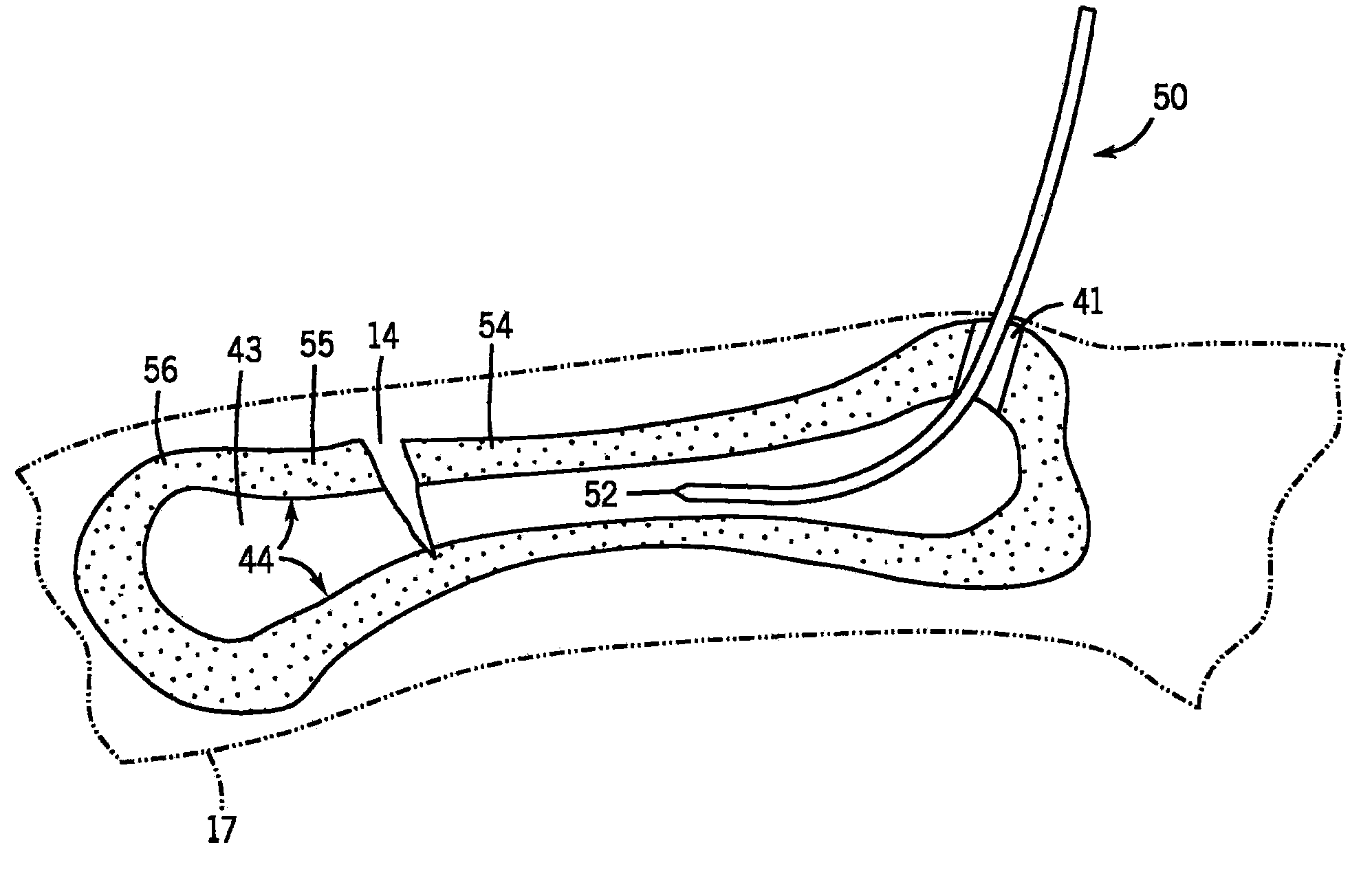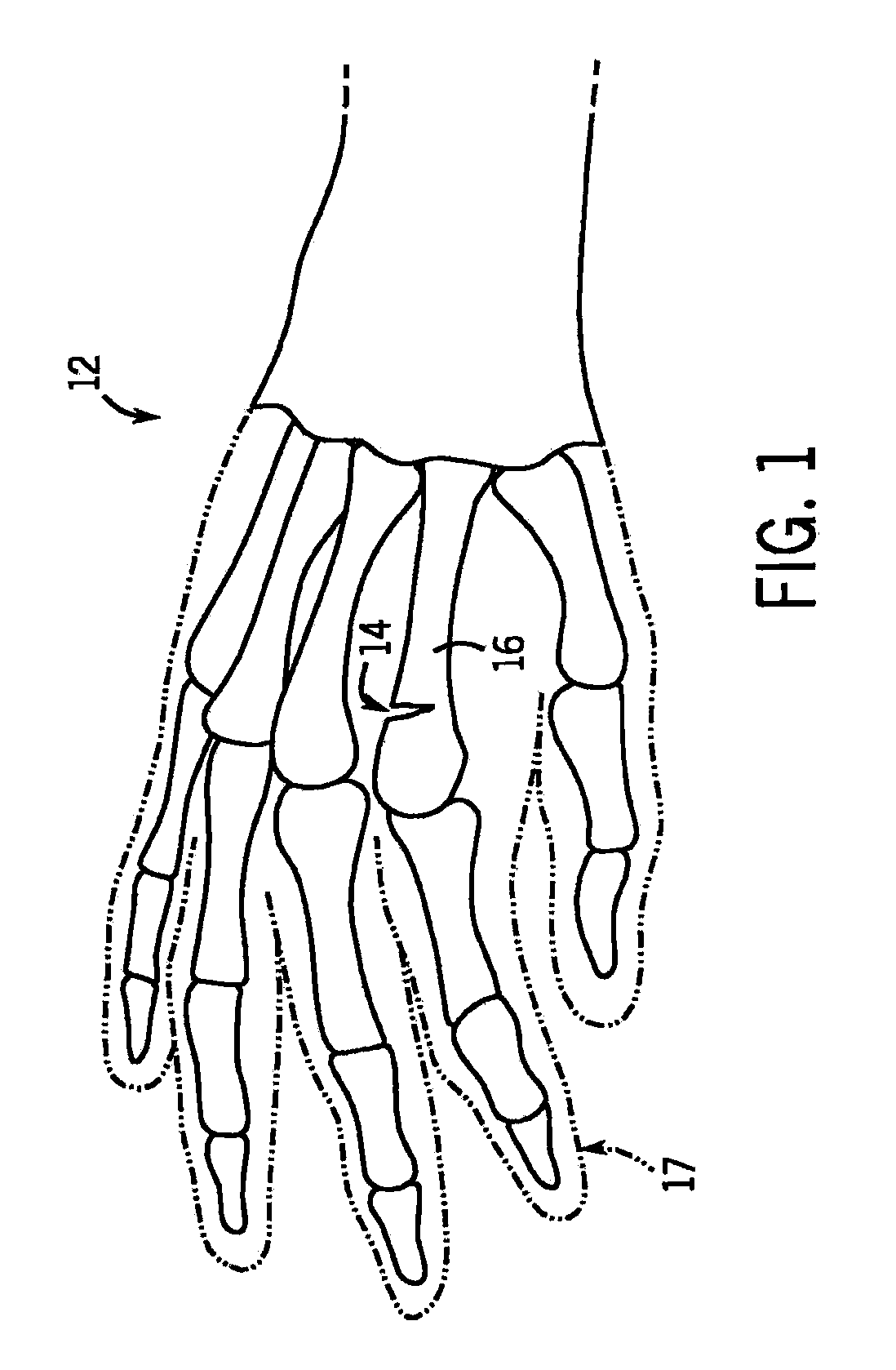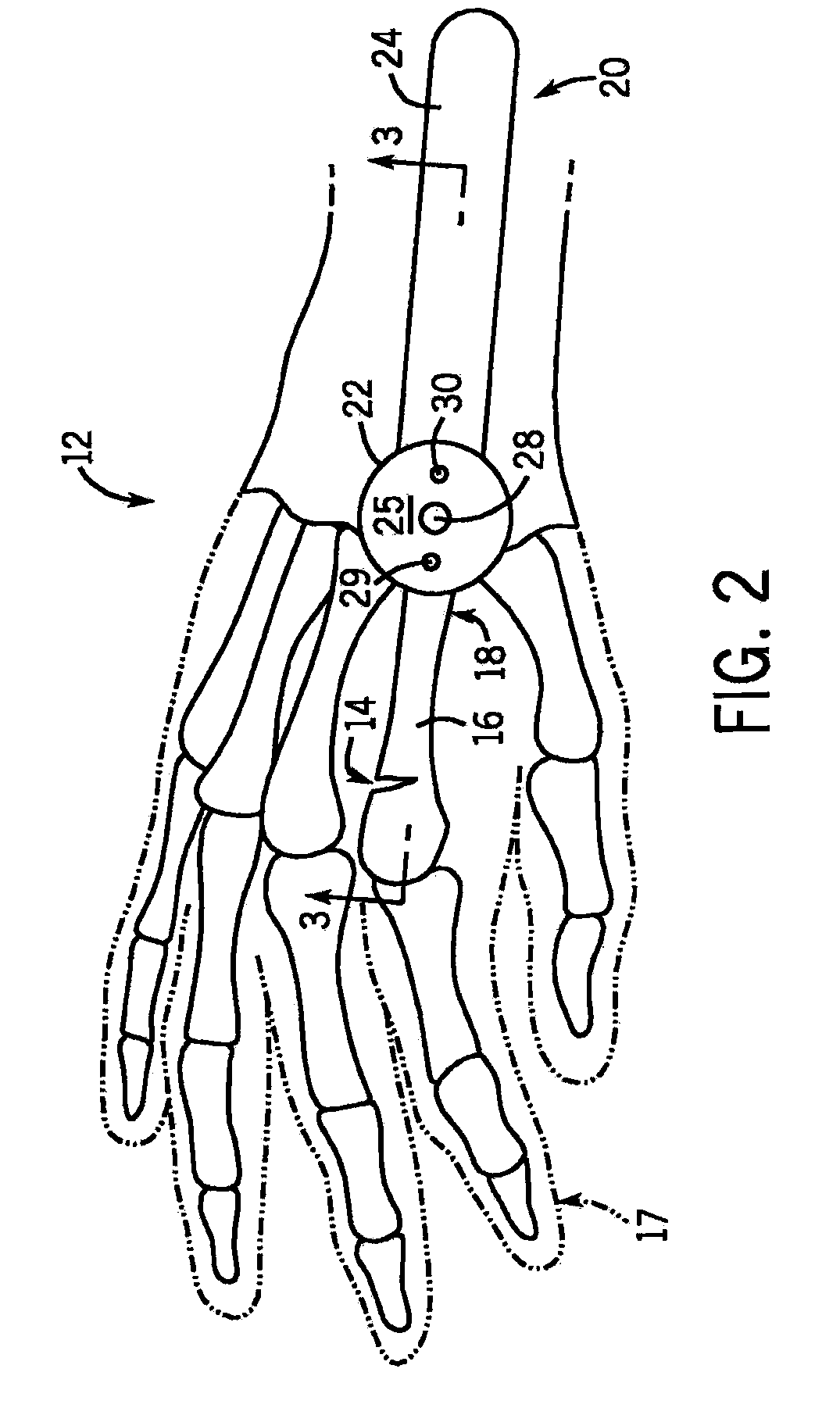[0011]The present invention addresses the foregoing needs by providing a
system for the fixation of fractures of small bones such as phalangeal, metacarpal, and metatarsal bones. The system uses curved shape-memory alloy (e.g., Nitinol) wires that have a predetermined
radius of curvature to accommodate different sized bones. Multiple sizes of the wires can be included in a kit. These shape-memory alloy wire forms are inserted into phalanx, metacarpal or metatarsal bones via a
percutaneous technique. The technique uses small
skin incisions; a specialized
drill guide that has holding K-wires to maintain fixation of the
drill guide to the bone so that it does not lose the
insertion point; a specialized drill as well as a specialized
wire cutter and advancement tool to make sure that the level of the wire is below the level of the outer
cortical bone. Shape-memory alloy (e.g., Nitinol) based wires with a pre-bent curve have an
advantage over the typical standard K-wire in that they can be allowed to spring back to their predetermined shape when inserted into the intramedullary canal of the bone and heated, i.e., a more aggressive curve. By increasing their bending or flexion to increase the arc of curvature, this allows fixation points for the wire form, essentially locking it to bone. This solves a problem with typical straight K-
wire fixation that does not have locking points that prevent movement or migration of the wire-bone construct.
[0013]Also, the use of a specialized drill prevents over penetrating of the bone. This drill also has a specialized tip that allows it to catch on the bone preventing the usual movement of the drill once it starts because of the torque from the
drill bit forcing the drill to move off of the bone. A shoulder ledge on the drill is used to prevent over penetration. Once the bone has essentially been close reduced and the
drill guide placed through a
small incision in the drill used to penetrate the cortex, the intramedullary device is advanced in through a hand toggling system. This can be checked under fluoro-imaging to make sure that it was advancing appropriately across the
fracture site. It is advanced only up to a certain point so that the wire can be then further advanced once it had been
cut to fit completely in the bone. Once the wire is imaged and perceived to be in the appropriate position, the shape-memory alloy is heated to restore its memory and increase its curvature points. The guide is then reduced and a special
wire cutter cuts the intramedullary nail very close to the bone. The guide can then be reapplied along the same previous K-wires that were there and then a wire advancement tool used through the drill guide to push the remaining wire into the bone so that it sits at or below the level of the
cortical surface. The wire advancement tool can have a special groove in the base of it to catch the bump or
ridge left by the wire cutter to help facilitate maintaining some rotational control. An alternative means is to precut or
cut prior to heating the
metal. This then advances the intramedullary device into the bone again prior to the memory being activated. The memory can then be activated by drilling two specialized wire probes to touch two different sections of the intramedullary device and then applying the heating electrical charge through these two
percutaneous wires that were then touching the shape-memory alloy in the bone.
[0014]Current methods for treating metacarpal and metatarsal fractures intramedullary with K-wires involve making an incision over the proximal aspect of the bone and drilling a hole in it large enough so that the wire can be advanced down the intramedullary canal. With shape-memory alloy intramedullary devices it is possible to insert this through the dorsal superior aspect of the metacarpal and metatarsal heads. This precludes the need for drilling a large hole into the bone. Instead this wire can be advanced and once it was passed the
fracture site and engages the dorsal cortex, the memory can be activated, the wire
cut at the level of the chondral bone and then again with the advancement tool, advanced another
millimeter or two. It can be quite easy to insert, certainly one if not two of these wires down the intramedullary canal in this fashion providing a fixation not only for diaphyseal type metacarpal and metatarsal fractures, but for also the more challenging metacarpal neck fractures, i.e., boxer fracture. Boxer fractures in this country are quite common. However, they can be challenging to treat in that there usually is not adequate bone distally for a traditional plate and
screw fixation and that K-
wire fixation with proud wires sticking through the skin can potentially lead to deep infections of the joint or soft tissues, or a significant
irritation with scarring and / or stiffness of the
small finger itself. This invention can preclude these types of problems by providing intramedullary fixation, which allows for early active
range of motion, improving patient outcomes.
 Login to View More
Login to View More  Login to View More
Login to View More 


